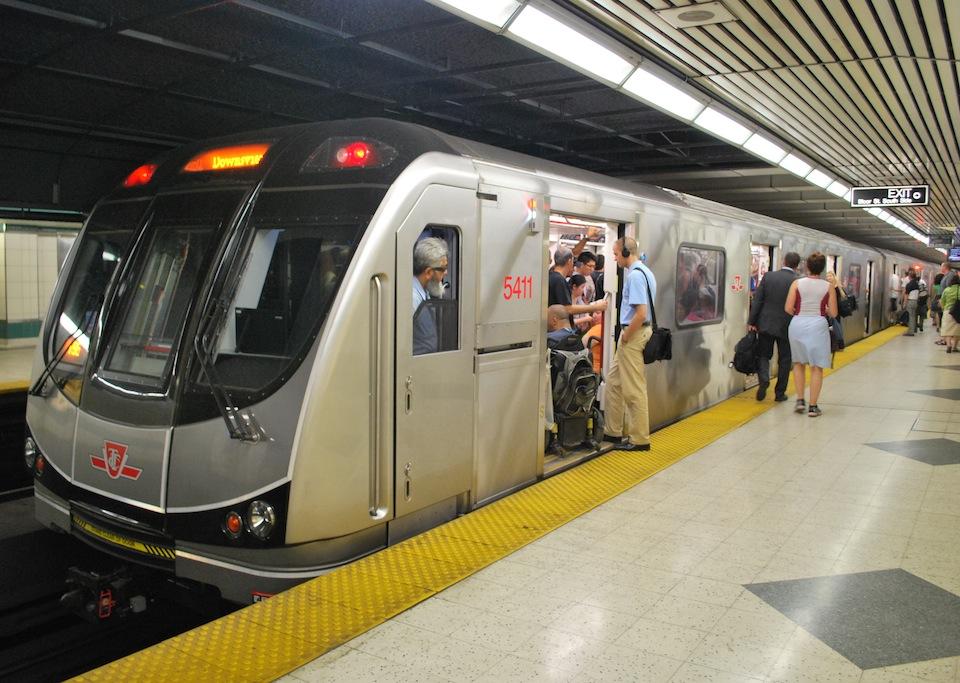I don’t take public transportation in Winnipeg. I work from home, I have a car and I can drive. I took the bus when I was younger, but that was (gulp) over 30 years ago. I think it was 75 cents a ride. We lived in a new housing development, so I had to clamber over a set of railroad tracks and the ditch on either side (one side filled with water in the spring) to get to the bus, which ran about every half-hour. Being a teenager, I never wore boots, not even at -40°C, so my feet were pretty much frozen November through March, but once I got to the bus, it was warm and safe and it would get me downtown (we didn’t go anywhere else back then) in about 30 minutes.
If I took the bus in Winnipeg now, I would want it to be comfortable, affordable, and the route to be direct. And I would want it to be safe. The Winnipeg Transit Master Plan wants some of the same things. If nobody messes with it, it looks pretty good. But I spent almost 30 years in Toronto, where every new mayor brings in a whole new grand plan for new subways and streetcars and throws out the old one. Forgive me if I’m skeptical.
The new transit system in Winnipeg will have more frequent service, with most routes having buses every 10 to 15 minutes. More than half the population will be within a six-minute walk of bus service and a whopping 73 percent within a 10-minute walk. Riders will have to make more transfers, depending on where you live, but with service coming frequently, that’s not so bad.
Right now, I’m spending a couple of months in the French Riviera. (I know, it sounds fancy, but it’s all pretty reasonable.) The population here is not high, but I can get to any place in a town – just about anywhere in France – that I want without a car, and the cost is even lower for short distances than the $3.25 one-way price for taking a bus from East Kildonan to City Hall. Everybody here takes public transportation at least sometimes, even if they own a car. It’s cheaper and you don’t need to find parking.
I recognize that distances are longer in Canada than they are in Europe and that the population is less concentrated, but I think that the real reason that public transportation is an order of magnitude worse at home is simply because of a lack of insistence. We expect to take care of our own business in Canada, so we expect to own cars.
Nothing wrong with taking care of yourself, but that doesn’t mean we can’t demand more from our public institutions. Public transportation is one of the things government should be responsible for; regardless of your political stripe (unless you are an absolute libertarian), we pay taxes so we can have services for the public good. Getting ourselves around, including those of us who can’t afford to have cars, can’t drive or are no longer allowed to drive, is a public good.
The problem is that we pay an awful lot in taxes and it doesn’t show in the price of admission to Winnipeg Transit. Why does it cost me the same amount to get across the city and back as it does to have a good coffee and a pastry? This, of course, is the going cost of public transportation in Canada. We’re on the high end in Winnipeg, and it’s more expensive for a monthly pass than Vancouver and Montreal, where there are subways.
(Before I go further, I need to address what’s better about subways than buses. One: a smoother ride. It’s not terrible to stand on the subway, but on a bus, you’re taking your life in your hands. Two: indoor stations, where you don’t wait in the freezing temperatures. Three: speed. Doesn’t matter if there’s a zombie apocalypse at street level, underground the trains keep moving. Winnipeg just isn’t densely populated enough to justify a subway system.)
As for security on buses, a community safety team has just been activated and they will be patrolling buses. There were 257 incidents on transit in 2023; that’s too many for me. The safety team won’t have guns but they will have batons and handcuffs, they will be able to detain people, and they have been trained in things like first aid, naloxone use and de-escalation techniques.
That’s not good enough for some folks. An academic at the University of Winnipeg says the funds that go toward the safety team should go towards things like mental health and drug rehabilitation. He may be right about those things needing money, but that money would take years to have an effect and people need to take the bus in the meantime. At the same time, the union that represents the police cries that non-police shouldn’t be allowed to detain people. Some people are never happy.
Overall, when it comes to public transportation in Winnipeg, what we have now is alright and what we plan to have is better. What about the best? I’ll join the chorus of Winnipeggers in giving my answer: we can’t afford it.


